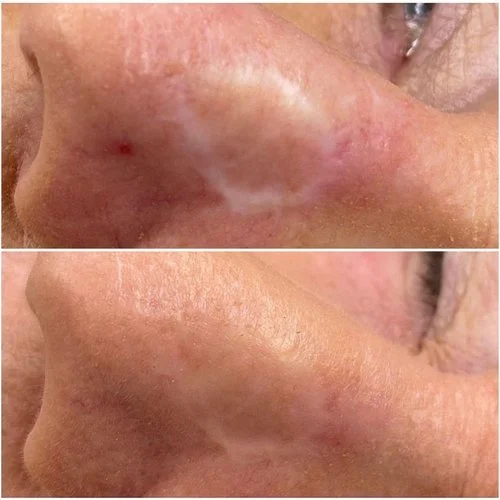Pigment Camouflage Tattoo
Pigment Camouflage Tattoo is an advanced cosmetic technique designed to conceal and blend scars, stretch marks, and hypopigmentation with a custom blend of pigments that match your natural skin tone.
How It Works:
This technique involves using a tattoo machine with ultra-fine needles to deposit medical-grade pigments directly into the skin. These pigments are custom-mixed using the Nue Conceal colour matching device, which precisely analyses your skin tone to ensure an accurate match. This eliminates the need for extensive manual colour matching. The pigments are carefully applied to the scar or area of discoloration, blending seamlessly with the surrounding skin. This process creates a more even, natural appearance by integrating the pigments with your skin, helping to reduce the visibility of scars and skin irregularities.
Pigment Camouflage vs. Traditional Tattoos:
Unlike regular tattoos, which are designed for artistic purposes, Pigment Camouflage Tattoos are intended to mimic the natural skin tone. The pigments used are specially formulated to blend seamlessly with your skin, offering a solution for scars or skin that has lost its pigment. Traditional tattoos use bold inks in various colours and designs, while Pigment Camouflage focuses on subtlety, creating a realistic and natural look.
Results:
The pigment typically needs 4-6 weeks to settle in and show visible results as the skin heals. For optimal results, 2-5 treatments are recommended, although many clients may notice some improvement after the first session. Since scar tissue tends to have difficulty holding onto pigment as well as healthy skin, multiple treatments allow the pigment to gradually build up and create the desired natural camouflage effect.
When to Choose Pigment Camouflage:
This treatment is most effective for flat, white scars or hypopigmentation. If your scars are textured, red, brown, or irregular, you may be better suited for starting with the Inkless Scar Revision Tattoo technique first. Learn more about Inkless here.






